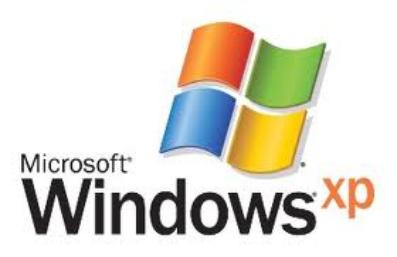
| Mr. Fixit's PC Upgrade and Repair |
| Windows XP |
All Microsoft Support ceased April 2014
Windows XP can analyze the performance impact of visual effects and use this to determine whether to enable them, so as to prevent the
new functionality from consuming excessive additional processing overhead. You now have the ability to lock the taskbar to prevent
accidental changes. Fast user switching allows users to save the current state and open applications of their desktop and allows another
user to log on without losing that information. The ClearType font rendering mechanism was designed to improve text readability on liquid
crystal display (LCD) and similar monitors, especially laptops
There were several features removed from Windows XP. CD Player, DVD Player and Imaging for Windows were removed. Windows
Picture, Fax Viewer, Windows Media Player and Windows shell took over their duties. NetBEUI and NetDDE are not installed by default.
Data Link Control (DLC) and AppleTalk network protocols were removed. Plug-and-play–incompatible communication devices are no
longer supported. Service Pack 2 also removed Program Manager and support for TCP half-open. Energy Star logo and the address bar
on taskbar were removed in Service Pack 3.
When Windows Vista was released in 2006, XP remained popular due to criticism towards Vista over privacy, security, performance,
driver support and product activation issues. Since its release in August 2001, Windows XP became the most popular version of
Windows, until Windows 7 overtook XP in August 2012. The name "XP" is short for "eXPerience" which was to highlight the user's
experience.

Windows XP was codenamed 'Neptune' when the project first began in the late 1990's
then later became 'Whistler' in 2000, then renamed to Windows XP in February 2001.
Windows XP received generally positive reviews with critics noting the increased
performance than Windows ME. It has a more intuitive user interface, improved
hardware support, and has expanded multimedia capabilities. Despite poor initial
public reception, which was often centered on driver support and security restrictions,
Windows XP eventually became popular and widely used.
Windows XP can analyze the performance impact of visual effects and use this to
determine whether to enable them, so as to prevent the new functionality from
consuming excessive additional processing overhead. You now have the ability to lock
the taskbar to prevent accidental changes. Fast user switching allows users to save
the current state and open applications of their desktop and allows another user to log
on without losing that information. The ClearType font rendering mechanism was
designed to improve text readability on liquid crystal display (LCD) and similar
monitors, especially laptops.
then later became 'Whistler' in 2000, then renamed to Windows XP in February 2001.
Windows XP received generally positive reviews with critics noting the increased
performance than Windows ME. It has a more intuitive user interface, improved
hardware support, and has expanded multimedia capabilities. Despite poor initial
public reception, which was often centered on driver support and security restrictions,
Windows XP eventually became popular and widely used.
Windows XP can analyze the performance impact of visual effects and use this to
determine whether to enable them, so as to prevent the new functionality from
consuming excessive additional processing overhead. You now have the ability to lock
the taskbar to prevent accidental changes. Fast user switching allows users to save
the current state and open applications of their desktop and allows another user to log
on without losing that information. The ClearType font rendering mechanism was
designed to improve text readability on liquid crystal display (LCD) and similar
monitors, especially laptops.